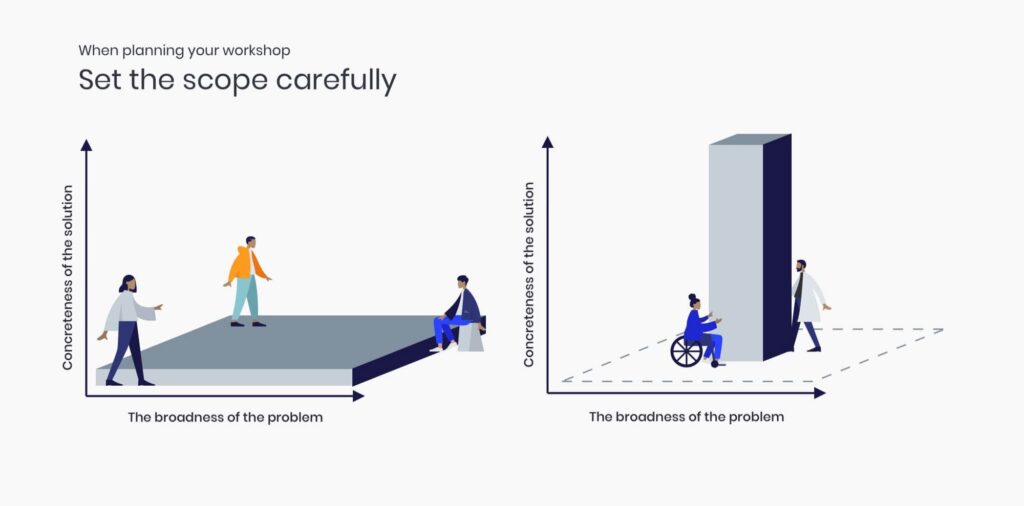Why do design sprints fail?
Design Sprints are one of Windmill’s core competencies. We use Design Sprints to help customers battle-test their ideas, examine their product-market fit, and identify market opportunities, and much more. We’ve run hundreds of them successfully over the years.
So why would we write a blog about why Design Sprints fail?
Partly because it’s a catchy title. But also because to do something right, you need to know what can go wrong.
So here are some of the biggest pitfalls a design team can run into—and how to avoid them.
Is a Design Sprint the right solution to my problem?
The biggest reason for the failure of a Design Sprint is using one to solve a solution that it isn’t suited for.
Design Sprint is a quick and dirty process that tests out ideas fast. Some projects are simply beyond the scope of a Design Sprint—or conversely, too narrow.
A Design Sprint is best at solving a tightly defined problem. That’s why defining the scope of a project is always the first step.

This graphic visualizes how a broad problem will result in a solution that scores low for concreteness; while a narrow problem results in a highly concrete solution.
Additionally, a Design Sprint isn’t needed when a product is already well defined, or if the problem is too small, like the development of a component.
Losing track of the Design Sprint process
One interesting aspect of the Design Sprint process is that, while it’s a creative process, it’s also highly structured, with defined roles and steps and relies on thorough admin/organization skills. It’s only by strict adherence to the process that creativity can flourish.
According to Moenika Chowdhury, a UX Researcher and Facilitator at Windmill
Common failures from team members can be the lack of note taking during meetings, not updating tickets, and failure to inform the team about changes they are doing. This can lead to inefficient work with tasks being done more than once, and overall confusion.
Sometimes a company may decide to tackle a problem by self-running a Design Sprint, and in doing so overlooks the importance of a skilled facilitator. Bad idea. A skilled facilitator is crucial to the success of a Design Sprint, using their talents to stimulate energy among the team, push the process forward, mediate conflicts, create a safe environment, and keep people on track.
Not enough stakeholders
A successful Design Sprint needs a variety of stakeholders in the room. A sprinkling of founders, engineers, marketers, designers—even board members—will add greatly to the sprint. According to Google Ventures, the ideal design sprint team should consist of about four to eight people.
It takes multiple teams to deliver a product to market, so getting those viewpoints makes sense. For instance, engineers might voice concerns about their ability to create specific features within their current architecture, while the marketing team may require more time to successfully promote the new feature.
Vitaliy Bobrykov, a UX Designer here at Windmill, has seen the criticality of a mix of stakeholders:
The team should have participants from different departments, like developers, product owners, business analysts, customer support, etc, in this case, we can have a versatile view of the problem. There must be a decision-maker in case the team gets stuck with a choice.
Communicationbreakdown
Effective communication among the design team is essential to the success of a sprint. Without it, the process can get bogged down. Some common communication mistakes include lack of note-taking during meetings, not updating tickets, and not informing the team about any changes in their design sprint processes in due time.
Effective communication between the client and business is needed to manage expectations, and without it, frustrations can arise.
A design sprint process that is not communication-oriented is bound to fail. It’s important to present design artefacts such as prototypes, user interviews, scenarios etc. to the audience using the correct medium of communication.
Takeaways
There’s an easy solution to all these problems: work with a company that has teams of experienced designers and facilitators and a proven track record of delivering successful Design Sprints.
Get in touch to harness the power of a Design Sprint and fix your biggest product problem.




